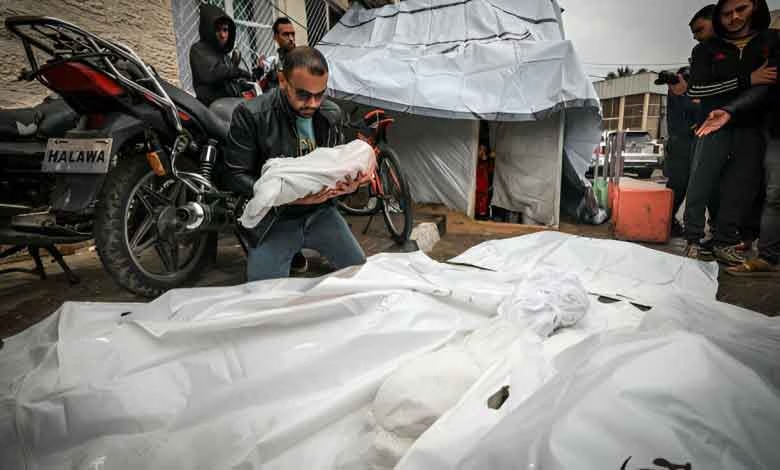
To truly grasp the human toll of the conflict in Gaza, it is not enough to tally the dead. Body counts—often contested, manipulated, or denied—are only part of the picture. Behind each number is a life ended, a family destroyed, a future stolen. And behind the politics of reporting those numbers lies a deeper battle: for narrative control, moral authority, and the erasure or acknowledgment of suffering.
Bombs and bullets are the most visible agents of death. But in Gaza, as in other conflict zones, indirect causes—deprivation, displacement, starvation—are equally deadly. The collapse of infrastructure, the blockade of essential supplies, and the destruction of hospitals have created conditions in which even those who survive the destruction face fatal consequences. As of January 2025, The Lancet estimated over 553,000 deaths in Gaza, including 393,000 children. These numbers reflect the consequences of both direct military attacks and systemic deprivation caused by the absence of essential resources and services.
Despite overwhelming evidence of mass casualties, the very act of counting the dead is deeply politicized. In April 2025, CBS News cited figures from Gaza’s Health Ministry, reporting over 52,000 deaths and 117,600 wounded since October 7, 2024—most of them women and children. Israel, however, rejected these numbers, claiming instead that 20,000 militants had been killed—without providing evidence or distinguishing between fighters and civilians.
This contest over numbers is not new. Right-wing commentators and media outlets routinely cast doubt on figures released by Palestinian sources, framing them as Hamas propaganda. For instance, in early April, Fox News reporter Efrat Lachter cited revised figures allegedly showing that 72% of those killed were men aged 13–55, implying they were mostly combatants. But such claims remain unverified and fail to account for the many unidentified bodies still trapped beneath rubble or unrecorded due to the scale of destruction.
The manipulation or dismissal of body counts serves specific political purposes. For governments like Israel and the United States, minimizing civilian casualties helps sustain constructed images of moral superiority and military propriety. Israel touts itself as having “the most moral army in the world.” The U.S. claims to be a defender of human rights. Both narratives falter in the face of mass civilian deaths in Gaza—especially those of children.
Hamas, too, has strategic reasons to shape public perception. A high civilian death toll may elicit international sympathy but can also provoke anger and resentment from Gaza’s own population. Meanwhile, the international community is left to navigate a fog of claims, counterclaims, and propaganda.
This politics of denial is not unique to Gaza. During the 2003 invasion of Iraq, U.S. General Tommy Franks famously stated, “We don’t do body counts,” echoing a post-Vietnam strategy of narrative control. Embedded journalists, selective reporting, and sanitized language all served to downplay the true human cost of war. The amin aim was to pacify public opinion at home. Independent researchers and NGOs were left to fill the void—often facing fierce pushback.
Israel appears to be following a similar path. Journalistic access to Gaza has been severely restricted. Reporters have been targeted and killed. Civilian deaths are routinely downplayed or dismissed. In the absence of verifiable data, the battle over numbers becomes a proxy war in the broader struggle over truth itself.
Israel’s blockade of Gaza—cutting off medicine, food, clean water, and electricity—has turned deprivation into a weapon of war. The result is a humanitarian catastrophe of staggering proportions. Thousands are suffering from severe malnutrition, and children are dying daily. Death tolls are being revised by the hour.
At the heart of all this is the fact that body counts are essential, yet also insufficient. They offer a quantifiable sense of loss but fail to capture the depth of trauma, displacement, and long-term suffering. They also miss the deaths caused by imposed deprivation. They can be distorted or weaponized by states and factions alike—to justify violence, deflect blame, or preserve illusions of moral conduct.
To truly reckon with what is happening in Gaza—and in other conflict zones—we must confront not only the human cost of violent conflict, but also the deeply cynical politics of how that cost is calculated, denied, and spun. Failing to do so only perpetuates the cycle of dehumanization that enables such atrocities to continue.
Subscribe to Our Newsletter
Get the latest CounterCurrents updates delivered straight to your inbox.
Dr Richard Hil is adjunct professor in the School of Health Sciences and Social Work at Griffith University, Gold Coast; adjunct professor in the Faculty of Law, Business and Arts at Southern Cross University. He is an author, academic and activist. He is the author of numerous books, notably co-authoring “The Sacking Of Fallujah. A People’s History” by Ross Caputi, Richard Hil and Donna Mulhearn.









































